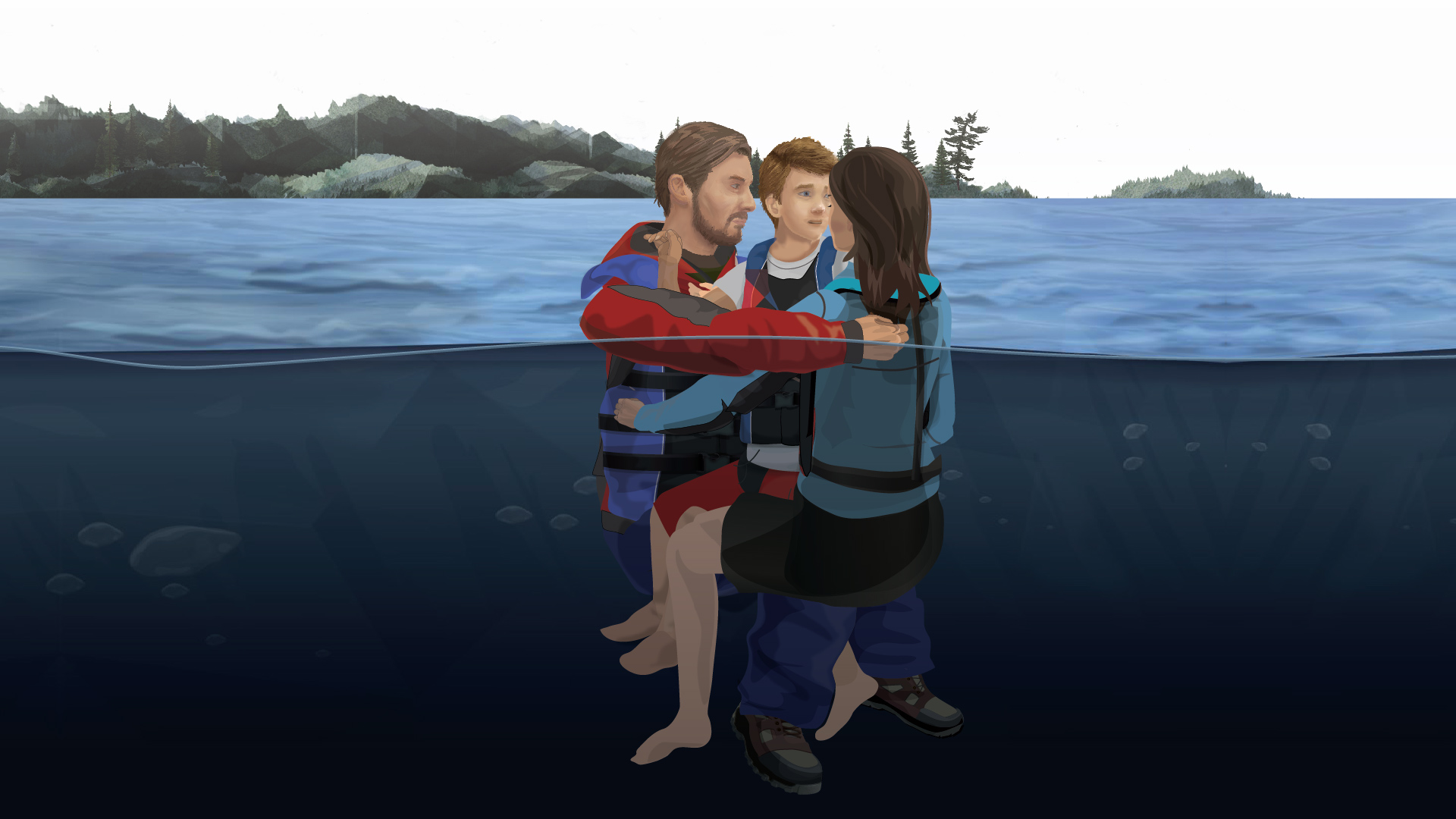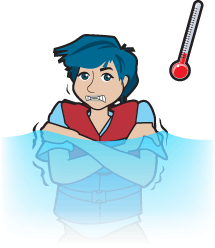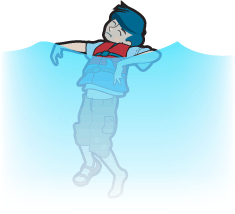Surviving Cold Water Immersion
Even though it may be t-shirt weather and the air is warm, the water can still be very cold. Because the majority of us do not participate in cold water activities, we are unaware of how our bodies react in early and late season conditions.
On average, 200 people die each year from cold water immersion. If you're heading out on the water this winter, or even doing some work around the shoreline, there are a few things that you should know about Cold Water Immersion and Hypothermia.
Always wear a PFD (Personal Floatation Device) or life jacket when boating in early or late season weather. There is also a wide selection of Hypothermia clothing available.
The Huddle Technique
It
is important to keep your head out of the water. A large percentage of your
body heat is lost through your head, so it is critical to keep dry. Cold
temperatures significantly decrease your physical ability. Swimming will be
more difficult and you will not be able to swim as far.
Heat Escape Lessening Position
H.E.L.P.
Always try to remove yourself from the cold water if you happen to fall in. If you have fallen from a boat, attempt to climb back on board. If you are a confident swimmer and a reasonable distance from shore, and suspect that rescue may not be likely, you may attempt to swim. But remember, you will not be able to swim as far in cold water.
Floating in the H.E.L.P. (Heat Escape Lessening
Position) will significantly increase survival time. Be sure you know how and
practice this position. You want to keep as much body heat as possible from
escaping. If you are alone, cross your arms tightly against the chest and bring
your knees up close to the chest.
If
there are 3 or more people, huddling in a group is the best option. When you
are rescued, be sure to replace wet clothing with dry and remain in a warm
setting until you are confident that your core body temperature is back to
normal.
The Stages of Cold Water Immersion
INITIAL IMMERSION: COLD WATER
"SHOCK"
If a person falls into cold water - their body's
initial reaction is a 'gasp reflex' which can include hyperventilation and
muscle spasms. This initial reaction can result in water inhalation as well as
significant changes in heart rate and blood pressure. These initial effects are
present for the first two or three minutes of immersion.
SHORT-TERM IMMERSION - IMPAIRED FUNCTION
In cold water, you may begin to experience the loss of basic motor skills after only a few minutes. Between 3 and 30 minutes after immersion a person's hands quickly lose strength and sensation and subsequently their ability to swim (even strong swimmers).
In cold water immersion cases, boaters often drown as a result of swimming failure before hypothermia ever has the chance to set in.
LONGER TERM IMMERSION - IMMERSION HYPOTHERMIA
Following 30 or more minutes of immersion, hypothermia - (a drop in body temperature below the normal level) will begin to set in. The persons overall body temperature will continue to drop until it reaches the same temperature of the water. Hypothermia symptoms range from mild to severe.
As the body's core temperature falls, a person will eventually lapse into unconsciousness.POST RESCUE COLLAPSE:
A drop in blood pressure which may lead person to become unconscious or to stop breathing at the point of rescue or up to several hours afterward.







Comments
Post a Comment